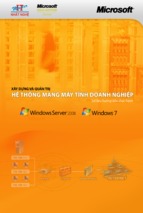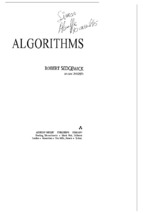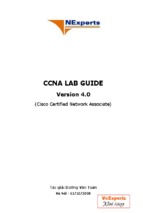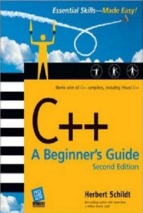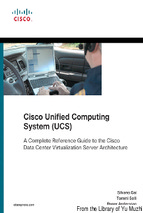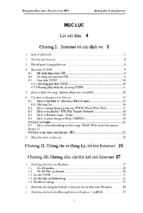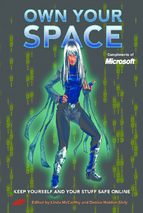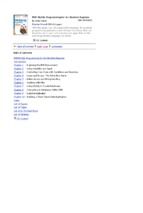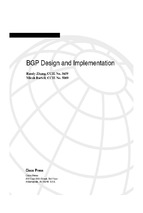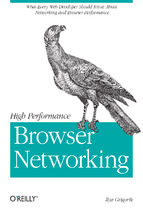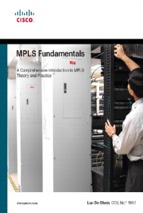Compliments of
Edited by Linda McCarthy and Denise Weldon-Siviy
page press
Smart Books for Smart People®
The author and publisher have taken care in the preparation of this book, but make no expressed or implied
warranty of any kind and assume no responsibility for errors or omissions. No liability is assumed for incidental
or consequential damages in connection with or arising out of the use of the information or programs contained
herein. All trademarks are the property of their respective owners.
Publisher: Linda McCarthy
Editor in Chief: Denise Weldon-Siviy
Managing Editor: Linda McCarthy
Cover designer: Alan Clements
Cover artist: Nina Matsumoto
Interior artist: Heather Dixon
Web design: Eric Tindall and Ngenworks
Indexer: Joy Dean Lee
Interior design and composition: Kim Scott, Bumpy Design
Content distribution: Keith Watson
The publisher offers printed discounts on this book when ordered in quantity for bulk purchases, or special sales,
which may include electronic versions and/or custom covers and content particular to your business, training,
goals, marketing focus, and branding interests. For more information, please contact:
U.S. Corporate and Education Sales
(510) 220-8865
Except where otherwise noted, content in this publication is licensed under the Creative
Commons Attribution-Noncommercial-No Derivative Works 3.0 United States License, available
at http://creativecommons.org/licenses/by-sa/3.0/us/legalcode.
ISBN 978-0-615-37366-9
Library of Congress Cataloging-in-publication Data
McCarthy, Linda
Own your space : keep yourself and your stuff safe online / Linda McCarthy.
ISBN 978-0-615-37366-9 (electronic) 1. Computer security. 2. Computers and children. 3. Internet and teenagers.
4. Computer networks-Security measures. I. Title.
Visit us on the Web: www.100 pagepress.com
Download free electronic versions of the book from MySpace (http://www.myspace.com/ownyourspace)
and Facebook (http://www.facebook.com/ownyourspace.net),
and from Own Your Space (http://www.ownyourspace.net)
rev 2.0
This book is dedicated to every teen who takes the time to
learn about security and how to stay safe and be smart online.
We also want to thank all of the teens joining this project and
the teens who originally inspired this book—Eric and Douglas.
Table of Contents
Preface. . . . . . . . . . . . . . . . . . . . . . . . . . . . . . . . . . . . . . . . . . . vii
Chapter 1: Protect Your Turf . . . . . . . . . . . . . . . . . . . . . . . . 1
Chapter 2: Know Your Villains. . . . . . . . . . . . . . . . . . . . . . . 7
Chapter 3: Nasty “ware” . . . . . . . . . . . . . . . . . . . . . . . . . . 29
Chapter 4: Hackers and Crackers. . . . . . . . . . . . . . . . . . . . 45
Chapter 5: Taking SPAM Off the Menu . . . . . . . . . . . . . . . 59
Chapter 6: Cyberbullies. . . . . . . . . . . . . . . . . . . . . . . . . . . . 73
Chapter 7: Phishing for Dollars. . . . . . . . . . . . . . . . . . . . . . 83
Chapter 8: Safe Cyber Shopping. . . . . . . . . . . . . . . . . . . . . 97
Chapter 9: Browsers Bite Back . . . . . . . . . . . . . . . . . . . . . 115
Chapter 10: Private Blogs and Public Places. . . . . . . . . . . 137
Chapter 11: Going Social. . . . . . . . . . . . . . . . . . . . . . . . . 149
Chapter 12: Friends, Creeps and Pirates. . . . . . . . . . . . . . 161
Chapter 13: Any Port in a Storm . . . . . . . . . . . . . . . . . . . 175
Chapter 14: Look Pa, No Strings!. . . . . . . . . . . . . . . . . . . 191
Chapter 15: Getting Help . . . . . . . . . . . . . . . . . . . . . . . . . 211
Chapter 16: Tweaks. . . . . . . . . . . . . . . . . . . . . . . . . . . . . . 223
Appendix A: A Note to Parents. . . . . . . . . . . . . . . . . . . . . 239
Acknowledgments. . . . . . . . . . . . . . . . . . . . . . . . . . . . . . . . 243
Contributors. . . . . . . . . . . . . . . . . . . . . . . . . . . . . . . . . . . . 244
Index. . . . . . . . . . . . . . . . . . . . . . . . . . . . . . . . . . . . . . . . . . 245
Preface
Linda McCarthy was inspired to write the first edition of Own Your Space when
the two teenagers in her house managed to destroy what she thought was a pretty
darn secure home computer network. Linda was more inspired when she realized
that Douglas and Eric weren’t looking to break things or even trying to impress her
when they brought down her home network. They were just using the Internet the
way normal teenagers do.
Since then, this book has become a collaborative project to provide free security
learning to teens and families online. Contributors to the 2010 edition include
Denise Weldon-Siviy, a mother of four, teacher, and writer. Other experts we are
adding to the team include specialists in firewalls, networking, and wireless systems, as well as advanced Mac and Firefox users. Our design specialists and anime
artists tie these concepts together in teen friendly form. We also have several teens
on the project and are adding new teens continually to keep the project current and
fresh. Without that teen involvement, this book and project would not exist.
For now, and for later. Like malware, that changes every day, we plan to update
this online version as needed to keep protecting our readers. Computer security is a
moving target. The eBook format allows us to run along side.
It was very important to us that this book be made available to ALL teens and
families in need of security learning. For that reason, this book is made available
for free online under the Creative Commons Licensing (creativecommons.org).
This project is made available through corporate sponsors and would not be possible without their support.
viii Own
Your Space
Who This Book Is For
This is a book for every teen and an essential resource for every parent and teacher.
Especially though, this is a book for the computer savvy, keyboard-comfy teens
who use the Net every day and want to know how to secure their systems, preserve
their Net lifestyles, and protect their data. This book provides important details
to keep those teens, their privacy, their identities, and their reputations safe in
cyberspace.
In short, this book is for normal teenagers—like you. We realize that you understand quite a bit about computers, probably a lot more than your parents. We also
know from our own teens where the gaps in your computer knowledge tend to fall.
We wrote this book to address those gaps.
Because we know your time is limited, we’ve kept this short and tried to focus
on the important aspects of security. We also kept it interesting by including real
examples and case studies from real teenagers just like you.
Even if you are a power user, this book is still for you! Sure, you’ll know a number of the details we cover. Still, we are willing to bet that you’ll find a number
of details you weren’t aware of before. And you’ll certainly find a lot of detailed
information you can share with a less enlightened friend, sibling, or parent.
Who This Book Is Still For, Just Not Quite 100% For
While this is a book full of details, it isn’t a book full of numbered instructions. We
wanted to write a book you’d want to sit down and read, not another 400-page
technical manual. To any Mac users, we apologize for including only screenshots
based on Windows 7. Much as we wanted to include all variations, that just wasn’t
practical for this edition. We will, however, be adding an appendix just for Mac
users soon. Still, most of this book applies every bit as much to Mac users as
everyone else.
Preface ix
What You’ll Learn
This book is designed for any teen who is
• In fear of drive-by downloads of nasty adware, spyware, and viruses
• Anxious about scareware and ransomware
• Trying to stay safe on social networking sites
• Concerned about online predators and identity thieves
• Scattering secrets to the wind in favorite hot spots
• Shopping online without protection
• Unsure of the risks about webcams and sexting
• Dealing with cyberbullies at home or in school
• Blogging alone and in the dark
Got a thought? We’ve love to hear your feedback on this book. Just send it to
[email protected].
Help save a forest and educate everyone in your school at the same time. Let your
friends, family, and classmates know that this book is available for free on many
corporate sponsor sites, as well as on MySpace (myspace.com/ownyourspace),
Facebook (facebook.com/ownyourspace.net), and at Own Your Space
(ownyourspace.net).
Chapter 1
Protect
Your Turf
Braden is a typical 14-year-old. Over the past 6 months, he’s grown three inches,
gained four shoe sizes, and eaten his way through nearly a ton of pizza. He’s also
unintentionally trashed his family’s computer no less than 12 times. First, he downloaded some cool emoticons to use with his IM messages. Those smiley faces came
with embedded adware that overwhelmed him with pop-up ads and slowed down the
speed of virtually everything. Then Braden installed a “free” video game that contained
a Trojan program that let spammers in Russia take over his computer and use it to
forward junk email. A few weeks later, Braden responded to what looked like a legitimate email asking him to confirm his Facebook login information. That phisher then
used Braden’s login to post links to adware to
Braden’s Facebook friends. Not long after
that, Braden clicked Yes to install
security software when a pop-up
announced that his computer
was infected with adware. As
you’ve probably guessed, that
software installed more adware.
Braden’s mom has spent so
much time, and money, having
the family computer fixed that
she’s beginning to wonder if
the Internet is really worth the
aggravation. What she is sure of
is that Internet security has become a LOT more complicated
than it used to be….
2 Chapter
1
Since the Internet’s inception in the late 1970s, the number of people who use the
Net has doubled every 9 to 14 months. Do the math and you’ll see a phenomenal
growth chart—from 281 computers on the Internet in 1981 to a dazzling 400
million in 2000. By 2009, worldwide usage passed 1.5 billion netizens. Internet
usage in the U.S. is nearing saturation levels.
Netizen A citizen of cyberspace (i.e. the Internet). A netizen is any person using the
Internet to participate in online social communities. When you confirm a new friend on
Facebook, you are expanding your online social group. You are being a good netizen!
While Internet usage among adults has risen steadily, Internet usage among teenagers has soared. As of June 2009, 90% of American teens lived in homes with
Internet connections. If you’re part of that 90%, it is especially important for you
to understand how to protect your computer from nasty code.
As you’ll learn later, your computer is at special risk. Adware sites target teenagers just like you by focusing their efforts on websites you and your peers tend to
visit. Online forums are targeted by pedophiles posing as teens. Even identify theft,
another potential consequence of nasty code, can be especially nasty for teenagers still in the process of defining their financial and business identities. If you use
your parents’ computers, you may also put their financial and personal information at risk.
For now, just keep in mind that there’s a lot more to Internet security than running antivirus software. And, it’s a lot more important than you probably realize.
Over the next few chapters, we’ll talk about what you need to know and do to help
keep yourself, your computer, and maybe even your parents safer when using the
Internet.
1.1 A Survey of Malware
Malware is a generic term for a piece of malicious code. That is, programming
code specifically developed to harm a computer or its data. If you’ve studied Spanish (or Latin, for that matter), you’ll know that “mal” means bad—like malcontent
(an un-contented, unhappy person) or Darth Maul in Star Wars Episode I (the
Protect Your Turf 3
obvious bad guy dressed in red and sporting horns). Nothing good ever starts with
“mal.” Malware is, quite literally, bad software.
Malware Programming code designed to harm a computer or its data.
Since malicious code and malware mean the same thing, for simplicity’s sake we
use the term malware throughout this book.
In the world of malware, there are several standard types of villains. We’ll be covering all of these villains throughout the book, but the main categories are
• Viruses
• Worms
• Trojans
• Bot armies
• Keystroke loggers
• Spyware
• Adware
• Scareware
• Ransomware
You’re probably already familiar with some of these categories. For instance,
computer viruses are now so well-known in the popular culture that they provided
the grand finale to the 1996 sci-fi thriller Independence Day. If you’ll recall, Will
Smith saved the day by helping Jeff Goldblum (better known as Ian Malcolm of
Jurassic Park) to upload a computer virus to the “mother ship,” disabling the alien
space crafts’ force fields. In real life, viruses and worms have taken out entire
unprotected networks. In August 2009, attackers shut down Twitter for nearly
three hours, leaving 44 million tweeters worldwide out of touch. If that doesn’t
sound like a big deal, imagine CNN or Fox News being driven off the air for an
afternoon.
4 Chapter
1
You are no doubt also familiar with antivirus software. Most, but not all, new
computers now arrive fresh from the factory already preloaded with at least a trial
version of one of the major antivirus packages. Usually, that’s Norton AntiVirus,
Trend Micro, McAfee, or Webroot. For virus protection, they are all excellent
products.
You may not be aware, however, that antivirus software can’t protect you against
all types of attacks. Many people think as long as they have antivirus software
installed that they are protected. That’s not true because several layers of security
are needed to protect you. Antivirus software is only one of those layers.
Before we take a look at the other layers of security, it is important to understand
what antivirus software can and cannot do. Think of your antivirus software as
a series of vaccinations. Having a polio vaccination won’t keep you from getting
hepatitis. Likewise, having antivirus software won’t necessarily protect your computer from spyware or adware. In fact, if you don’t routinely update your antivirus
software, it may not even protect you from viruses. Like their biological cousins, computer viruses mutate. Just as you may need a new flu shot each winter to
protect against new viral strains, you also need to update your antivirus software
continuously. For other types of malware, you may need other types of protection.
We’ll explain these as we discuss the specific types of malware.
1.2 Protect Your Turf, Then Surf!
When you buy a computer, it is not secure. You should never pull a computer out of
the box and connect it to the Internet unless you take steps to protect it. Think of
your PC as a world traveler who needs vaccinations to avoid diseases in its travels.
In fact, your new computer most likely is plagued with numerous security holes,
which are flaws in the way your computer’s programs have been written that
would make your computer vulnerable to attack. Just how serious the flaws in
the code are determines how much access an attacker or that attacker’s malware
can gain.
Warning!
Uneducated programmers + programming mistakes = security holes!
Protect Your Turf 5
If you’re wondering why your computer has holes before you use it, the answer is
that computer systems run on programs—literally tens of millions of lines of code
that tell the computer how to interpret what you, the user, want to do. All those
lines of code are written by human programmers. Those programmers can make
mistakes that can be leveraged by hackers to gain unauthorized access to your
computer. This probably sounds strange, but most programmers were never taught
how to write secure code. To take it one step further, programmers don’t think like
criminals. We don’t use that term very often, but that’s what someone who deliberately steals or damages someone else’s data is—a criminal. Your average programmer hasn’t always thought, “Gee, I could use these lines of code to break into
someone’s computer,” because the programmer doesn’t actually WANT to break
into anyone’s computer.
Security Hole Any flaw in the way a computer program is written or used that makes
your computer vulnerable to attack. Security experts also call this a security vulnerability.
The lack of focus on security as part of the design process is starting to change.
More programmers are beginning to audit (double-check) their code with special
tools that look for programming errors that can lead to unauthorized access to the
system or data. It will take a long time for the programming community to catch
up, however. Think of the millions of lines of code already out there that have
been developed by programmers with good intent, but poor security-programming
skills. Since all computer systems have security holes, you must protect yourself
and patch those holes before you start surfing the Internet, downloading music, or
gaming.
Warning!
Once connected to the Internet, an unprotected PC can fall victim to an attack in as
little as 15 seconds! Protect your PC before you surf!
Why so fast? Once you’re online, it can take as little as 15 seconds for someone to
attack your machine. If you don’t install security first, that first attacker may gain
access to your computer without you even knowing about it! At worst, the attacker
6 Chapter
1
could make off with enough personal data to steal your identity. If you use financial software to track the bank account you opened for college savings when you
picked up that after school job, keep in mind that your data isn’t just information.
It could be cash as well. And just to add another twist, a hacker could even use
your computer to launch an attack on other computers! For these reasons (and
many more we’ll get to later), don’t ever surf the Internet without security patches,
antivirus software, and a firewall installed.
When you bought your computer, you probably started
with a list of requirements: how much memory, how
much disk space, what kind of graphics you’d need for
your favorite games, whether you want to burn DVDs
Internet Security List:
as well as view them. Before you go online, you also
Anti-Virus
need a Computer Security shopping list. This list is a baAnti-Spyware
sic list. You should not leave any one of these items off
Personal Firewall
Security Patches
your list. Virus protection must be on that list. You have
to install it and configure it to update your computer automatically. You also need to install any security patches
that have been issued for the operating system and the software you plan to use.
Security Patch A fix to a program to close a known security hole. Patches are routinely issued for operating systems (like Windows 7) and Internet browsers (like Internet
E xplorer and Firefox) as well as other software applications.
The Internet is an infinitely cool place, but so is the vampire royal court in
Volterra. We think it would be great to actually visit such a place, but only if we
understood the Volturi laws, knew about Aro and Jane’s gifts in advance, and also
brought our own immortals. The Internet is exactly like that! There are wonderful,
new, and exciting things going on there—but you really shouldn’t show up without
knowing the risks, understanding how to defend yourself, and arming yourself
with the right protection.
Chapter 2
Know Your
Villains
Meet Eric, from Novato, California, a normal teen who likes to create web pages for his
friends. Eric spends a lot of time on the Internet. He is a major gamer, visits a lot of different sites looking for ideas, and likes to download free software.
Before Eric got his own laptop, he used his mom’s computer to surf the Net and download free stuff. Eventually, Eric’s mom’s computer became so slow that it took forever
to download software. That’s when Eric asked a friend what to do. That’s also when
Eric found out that he should have had a firewall and downloaded patches to prevent
hackers from planting spyware on his system.
Eric thought that antivirus software was all he
needed and he hadn’t even heard of drive-by
malware.
Eric found out the hard way that
a hacker had back-doored his
system and had been sifting
confidential information from
it. Well, not really Eric’s system. It was his mom’s system
and her confidential information. Oops… sorry, Mom. Now,
Eric has his own laptop with
a firewall, current patches,
antivirus software, and spyware
protection.
8 Chapter
2
What happened to Eric? He simply didn’t have the right protection to keep the bad
guys out and to keep malware from getting in. Like most teens, he needed to know
a lot more about security than he did. While virus protection is important, it’s not
the be-all and end-all of security. Malware can land on your system in many ways.
You might simply have visited a website that was created specifically to download
malware.
2.1 Why Does Malware Exist?
When you consider the work that goes into writing software, you have to ask why
anyone would care that much about trashing a stranger’s computer system. To
understand why people write malware, it helps to look first at WHO is doing the
writing.
A surprising number of teens write malware. According to Sarah Gordon, a research scientist, their most common feature is that they don’t really have a lot in
common. Sarah’s research finds that malware writers “vary in age, income level,
location, social/peer interaction, educational level, likes, dislikes and manner of
communication.”
While some teens write malware for the sheer challenge of it, others have heavy
delusions of grandeur. That was certainly the goal of Sven Jaschan, an 18-yearold German teen sentenced in 2005 for creating Sasser.e, a variation on an earlier
worm dubbed Netsky. Sasser literally bombarded machines worldwide with millions of junk emails. Jaschan’s goal wasn’t so much to disrupt Internet commerce
as it was to make a name for himself. After his arrest, he told officials he’d only
wanted to see his “creation” written about in all the world’s papers. Jaschan told
reporters, “It was just great how Netsky began to spread, and I was the hero of my
class.”
Is this admiration justified? Rarely. Consider the case of Jeffrey Lee Parson, of
Minnesota, an 18-year-old arrested for releasing a variant of the Blaster virus.
While his friends and neighbors were taken in, at least briefly, the world of computing professionals was not. Parson had simply copied the existing Blaster code,
created a simple variant (no real skill there), then was almost immediately caught
when he released it. Not a lot to admire.
Know Your Villains 9
The nature of malware writers has evolved with the technology they exploit. The
very first self-replicating programs existed mostly as technical exercises. For the
most part, these were generated by graduate school programmers, often as research for doctoral theses. Early on, the field expanded to include teens looking for
a technical challenge as well as the stereotypical loner geeks—socially awkward
teens using malware to make names for themselves. These writers not only didn’t
hide their viruses very well, many didn’t hide them at all. Their goal was to make
as many people as possible aware of what they’d done.
Not surprisingly, many of these malware writers were caught. Even today, some
malware includes “authorship” information. In some cases, those really are the
names of the malware writers or the groups they represent. In other cases, named
authors are themselves additional victims.
More recently, professionals are joining
the loop. Mikko Hypponen of the Finnish
security firm F-Secure, notes, “We used to
be fighting kids and teenagers writing viruses
just for kicks. Now most of the big outbreaks
are professional operations.” They’re looking
for cash, not infamy.
People still write malware for the challenge or to become famous, but they also
write malware to steal intellectual property
from corporations, destroy corporate data,
promote fraudulent activity, spy on other
countries, create networks of compromised
systems, and so on. Malware writers know
that millions of computer systems are vulnerable and they’re determined to exploit those
vulnerabilities. Does this mean that all those
teen users are turning into computer criminals? No. It simply means that with widespread Internet access, more people are using
the Internet to commit crimes.
Wanted Dead or Alive!
Reminiscent of old West bounties,
a few malware victims have struck
back by offering substantial
awards for the capture and conviction of worm and virus writers.
Microsoft began the trend, offering $250,000 bounties, and then
upping the ante to $500,000 on
the Blaster and SoBig authors. Preparing for future attacks, on November 5, 2003 Microsoft funded
the Anti-Virus Reward Program
with $5 million in seed money to
help law enforcement agencies
round up malware writers. That
approach continues today. In February 2009, Microsoft offered a
$250,000 reward for information
leading to the arrest and conviction of those responsible for the
Conficker worm.

